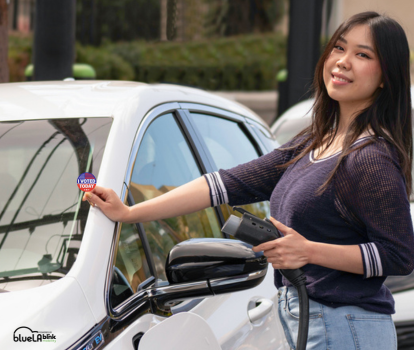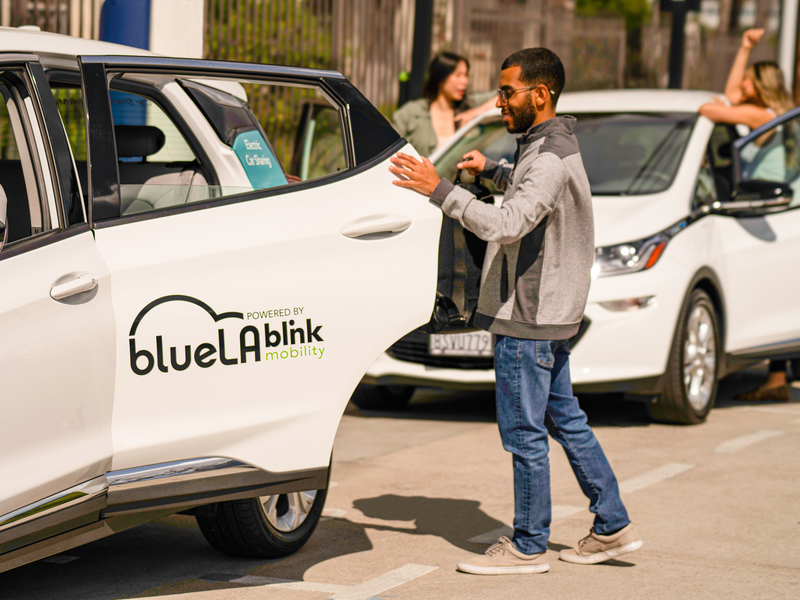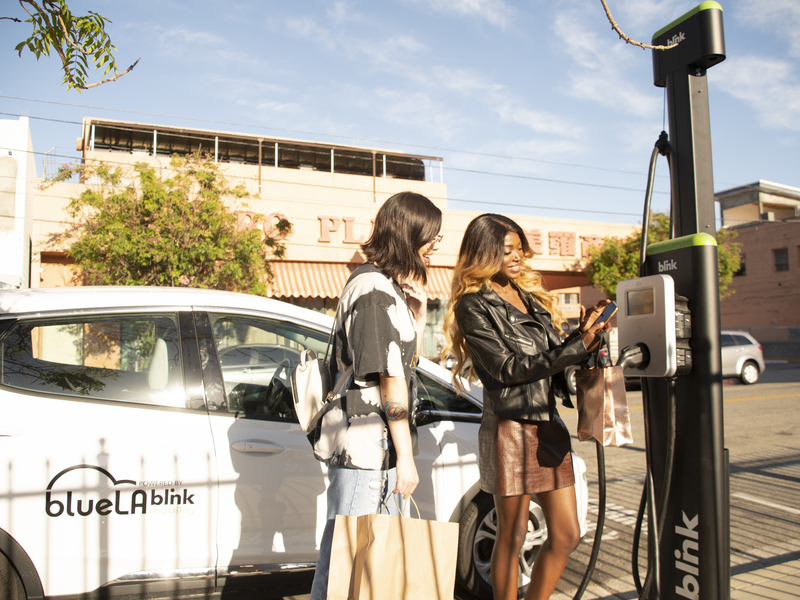It is certainly easier to get around in Los Angeles if you own a car, but thankfully there are many options for getting around the city that don’t include car ownership.
Car ownership can be very expensive. The highest expense is obviously the car itself, but drivers also face the price of insurance and fuel, both of which are notoriously expensive in the City of Angels. Most residential buildings require purchasing a permanent parking spot, which can be over $100 per month, and most public garages and lots charge for parking, even for a short period of time. Car ownership can be expensive, especially in L.A., but thankfully there are other choices:
- The Metro Bus. While many Angelinos are biased against the bus, it can be a useful and inexpensive way across town ($1.75 will get you all the way from Downtown to Santa Monica). The bus is very convenient for those who live or work near bus stops and don’t have a lot of bags to carry. Not all buses are the same, but most are clean, air-conditioned, and kept in good order. They also tend to be faster than traffic because they have their own bus lanes or use the shoulder. Always having exact change is a challenge, so most riders have TAP cards, for use on buses and to pick up public bikes and more. They can usually be purchased or have money added at kiosks in bus stations across town. The Frugal Noodle suggests using Google maps rather than confusing bus maps to find routes. Look up “directions” on Google from where you are to where you want to be, then click on the “public transportation” option. The TransitApp can inform you about when buses will arrive and leave so you don’t need to wait longer than necessary.
- The Metro Train Station. The metro line, or subway, came to L.A. not long ago and has proven popular. Its greatest drawback is that it doesn’t go to all places, which may force riders to use two different forms of public transportation, such as ride share, micromobilty, or even car sharing to get exactly where they’re going. Metro maps can help you find the correct route. It’s better for long distances than the bus because it doesn’t make frequent stops and is not help up by traffic. You can use the same Tap card to use the metro; there are no turnstiles to block you, so just make sure to tap the card before entering. Metro police abound and give tickets to those who don’t pay. It’s usually a cleaner and more popular option than the bus when it happens to be going to the place you want to go.
- Micromobility. Micromobility refers to the short-term rentals of bicycles and scooters. If you’re near your destination or want to avoid use of fossil fuels completely, riding a bicycle or a scooter is a popular option. Most L.A. streets have bike lanes. Bikes are also a healthy and relatively inexpensive choice. Check out information for bikers to learn how to get the most out of bicycle routes and lanes. For those who aren’t looking for the expense and trouble of their own bikes, and for tourists, there are bicycle and scooter rentals. Metro bike share enables riders to pick up and drop off bikes at destinations around the city, and Lime allows the same for scooters. Micromobility options are also great for making up for those gaps when you live just a little too far from a station or bus.
- Ride Sharing. Ride-sharing services like Uber and Lyft can be a more affordable option to regular taxis. Uber Los Angeles enables riders to request a ride, get an estimate, and learn how to get around the city, while Lyft offers information on requesting a ride and how to become a driver. A new Uber “Express Pool” allows riders to gather in one central location, which will require some walking, but saves riders money over usual Uber fares. Ride sharing can sometimes be more efficient and more comfortable, but it is also a more costly public transportation option.
- Car Sharing. Car sharing allows for rentals by the hour vs by the day or week. BlueLA Powered by Blink Mobility is a 100% electric car sharing service and part of the City of Los Angeles’s mobility solutions. Blink Mobility is available to anyone over 18 years of age with a valid driver’s license. Members have access to a network of shared electric vehicles 24-hours a day, 7 days a week, at self-service locations throughout central Los Angeles. This is a great option for the Angelinos who don’t own a car but still prefer to drive. Driving allows users to go where they want, when they want, without having to worry about bus schedules, exact change or passes, walking, biking, or wasting time waiting for subways. Make your own schedule by becoming a car sharing member. Whether you need to drive to work, get to a doctor, go grocery shopping, or spend the day at the beach BlueLA Powered by Blink Mobility can help you get there. Blink Mobility offers packages, such as the 3-Hour City Sprint or 5-Hour Breakaway at savings over regular rental rates. Standard Membership is $5 per month, and Community Membership for income qualified members is $1 per month. Best of all, all Blink Mobility rental cars are electric, enabling drivers to get where they want to go with no tailpipe emissions.
Not owning a car is not a reason to be stuck at home, even in Los Angeles where driving can feel like a necessity. There are many available options for those who need to get where they’re going! We may be a little biased, but Blink Mobility is our go-to public transportation option because it is a low-cost alternative to vehicle ownership. New to car sharing? These Car Sharing etiquette tips will steer you in the right direction!
Found this blog helpful? Share it with your friends and show them all the ways they can get around town without owning a car!
Recommend for You
Stay Informed
Join our mailing list for hot news and company updates.







